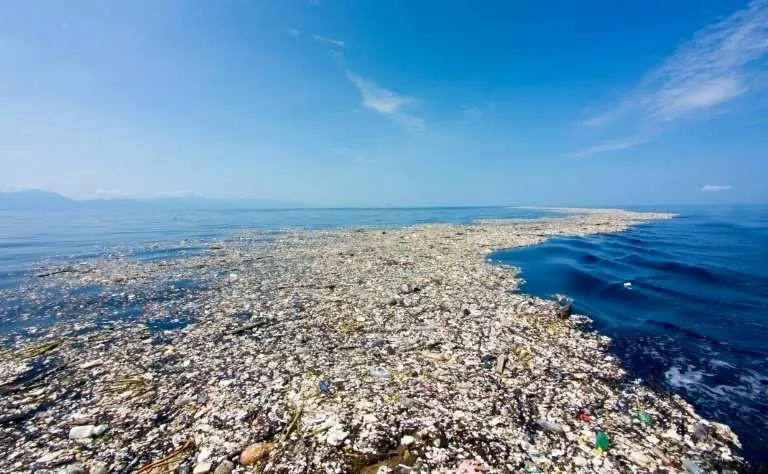Plastic and the tourism sector - 2024
Today, I present an update on the topic of plastics, in particular, on what has been done to reduce (consumption), reuse (of the product), and recycle.
You can read the first article of 2022 by clicking on the title “Plastic data in Italy and Europe”.
Are you wondering what motivates the tourism sector to be against plastic pollution? I am; let’s talk about that, too.

What drives the tourism sector to deal with the plastic problem?
- Immense traditional use of single-serve in hospitality for both courtesy sets and breakfasts.
- Massive use of plastic containers for food delivery or take away by guests.
- Heavy use of plastic bottles for water during excursions.
These three situations generate considerable disposal costs for the operators. In addition,
- the visible and abundant pollution of plastic makes places ugly.
- The phenomenon is global and globally criticised; no place is safe, not even the ocean or Antarctica or any remote island. This approach creates sensitivity.
- The proposed clean-up activities are always well received by the public.
Unfortunately, operators often have backward hygienic rules; this does not help to change attitudes, improve one’s proposal, or strive to find better suppliers.
The key tourism-related issues in this update (to be reviewed in April when the 2023 report comes out) are:
- the single-serve;
- existing alternatives to plastic to be used when single-serving is mandatory;
- the recovery of plastic waste.
Plastic data update in early 2024
The pillar objectives around which it is agreed to build policies that can contribute to climate neutrality goals and, at the same time, address the problem of plastic pollution, in order of cost and time horizon of effects, are:
- Reduction in plastic consumption
- Increased recycling and reuse rates,
- Use of bioplastics
Two scenarios to 2050 (current policies and best case) have been elaborated on by the think tank ECCO regarding plastic consumption in Italy and the CO2 emissions associated with this consumption.
In the 2050 Current Policies Scenario, plastic consumption is assumed to increase by 5% every six years, as observed in 2011-2017.
In the 2050 Best Case Scenario, on the other hand, it is assumed that by eliminating overpackaging and reducing the consumption of single-use plastic packaging and plastic consumption in other sectors as well, the consumption growth trend will be reversed, reaching 3.8 Mt in 2050.
The emissions associated with this plastic consumption were then calculated. The plastic consumed and not the plastic produced is considered since Italy is a large consumer of plastics, but polymer production is low. The Current Policies 2050 Scenario assumes that more than half of the plastic placed on the Italian market is fossil, and the remaining is from recycled or biobased material.
Considering end-of-life, 70% of post-consumer plastic waste is assumed to be recycled; the rest is destined for waste-to-energy or industrial composting. This scenario results in a 9% reduction in emissions compared to 2020.
In the 2050 best-case scenario, it is assumed that no more fossil-based plastics will be placed on the Italian market but only produced from recycled and biobased plastics.
Accepting European calls for the elimination of landfilling and the reduction of CO2 emissions through incineration, it is assumed that more than 90% of plastic waste will be recycled, thanks to significant improvements in plastic collection, sorting and recycling. In this scenario, an emission reduction of 98% compared to 2020 is achieved.

The 2050 best-case scenario is very ambitious. To achieve the best case, it is necessary to implement various existing policy instruments that are optional in Italy’s case.
The deposit system is, for example, an effective tool to increase packaging reuse and recycling rates.
In countries where this recycling system is required by law, beverage container collection rates of up to 94% are achieved (Lithuania, Denmark, Finland, Norway, the Netherlands and Germany).
In Italy, a specific regulation introducing deposit systems for plastic beverage containers was included in the Simplification bis decree of 2021; the implementation of the decree is still to be issued so that the system can come into force. However, it is also important to say that the timeframe required by Europe (by 2029) is very long. If we add to this the long timeframe for implementing rules in Italy, as Italian I can tell, we understand why deposit systems still need to be compulsory in Italy.
In hotels and any activity where people are guided, the bail system partially requires the guest’s cooperation and organisation and a positive and engaging approach from the staff.
The informed and involved guest will always be more willing to cooperate, even if their habits at home are different.
The introduction of regulatory instruments to encourage the transition from disposable to reusable products plays a decisive role in the policies adopted in several European countries.
Taking French legislation as an example, in Italy, a reuse target for all types of marketed packaging could be introduced in steps of 5% by 2024 and 10% by 2028.
In the case of the hotel, switching from single-serving breakfast products to products in glass bottles would already be a step forward; it is more complicated to speak of reusable when there are hygienic rules to be followed (however, sterilised and labelled containers may be one way). In the case of activities such as tours, switching from plastic products to products in aluminium or glass containers (in the case of juices, tea, water, wine, etc.) is already possible.
It would be great to add the combination of a water bottle and the presence of fountains where water can be filled at the destination to help remove the disposable habit.
To improve the quality of recycling and reduce the need for virgin plastic, it is possible to intervene upstream with a product design that aims to simplify polymer compositions and the disassembly of products into homogeneous components from the point of view of the constituent polymer.
In this case, the tourism sector can contribute to the improvement through the choice of materials, suppliers and knowledge of the products we buy for everything from furniture to the decoration on display, from courtesy sets to food containers in the kitchen.

Plastic tax and European SUP Directive
Plastic Tax
The European Union has also introduced a plastic tax of 0.8 €/kg on non-recycled plastic packaging waste produced in each Member State.
The cost for Italy is expected to be around €900 million per year, and these contributions are allocated to the EU budget, which is used to finance the Recovery Plans. The €900 million contribution that our country has to pay to the European Union, if not collected by the national plastic tax, is a burden on the state budget.
The Italian plastic tax was introduced with the Budget Law 2020 and was supposed to come into force in the summer of 2020 but was then postponed to January 2021, July 2021, January 2022, January 2023, and January 2024.
The Budget Law 2024, in force since 1 January, postpones the effectiveness of the so-called plastic tax and the sugar tax established by the Budget Law 2020 to 1 July 2024 in Article 11, paragraph 1.
European SUP Directive
The European Commission has introduced new regulations concerning disposable plastic products, commonly found as litter on European beaches and seas, and fishing equipment that is accidentally lost or abandoned.
The directive introduces several measures, including:
- A ban on the sale of many disposable plastic products for which alternatives with a lower environmental impact are already available (cotton swabs, cutlery, plates, straws, drink stirrers, balloon poles, expanded polystyrene food and beverage containers, expanded polystyrene beverage cups).
- Targets for reducing the consumption of beverage cups and some disposable plastic food containers.
- Design requirements for plastic beverage bottles (caps shall be attached to containers, and PET bottles must contain at least 30% recycled material by 2030 of recycled material by 2030).
- establishment of extended producer responsibility schemes for certain types of plastic products other than packaging (filters for tobacco products, balloons, wet wipes and fishing gear), also including the costs necessary for the removal of related waste if dispersed in the environment.
- separate collection targets for plastic beverage bottles with a capacity up to three litres (90% by 2029).
Sara – tourism sector consultant
PS. Do you want to GROW your business with a POSITIVE impact… without huge investments? Sign up for the email list by clicking on START HERE!
Or click this link https://www.sustainabletourismworld.com/start-here/ to download my INFOGRAPHIC!
